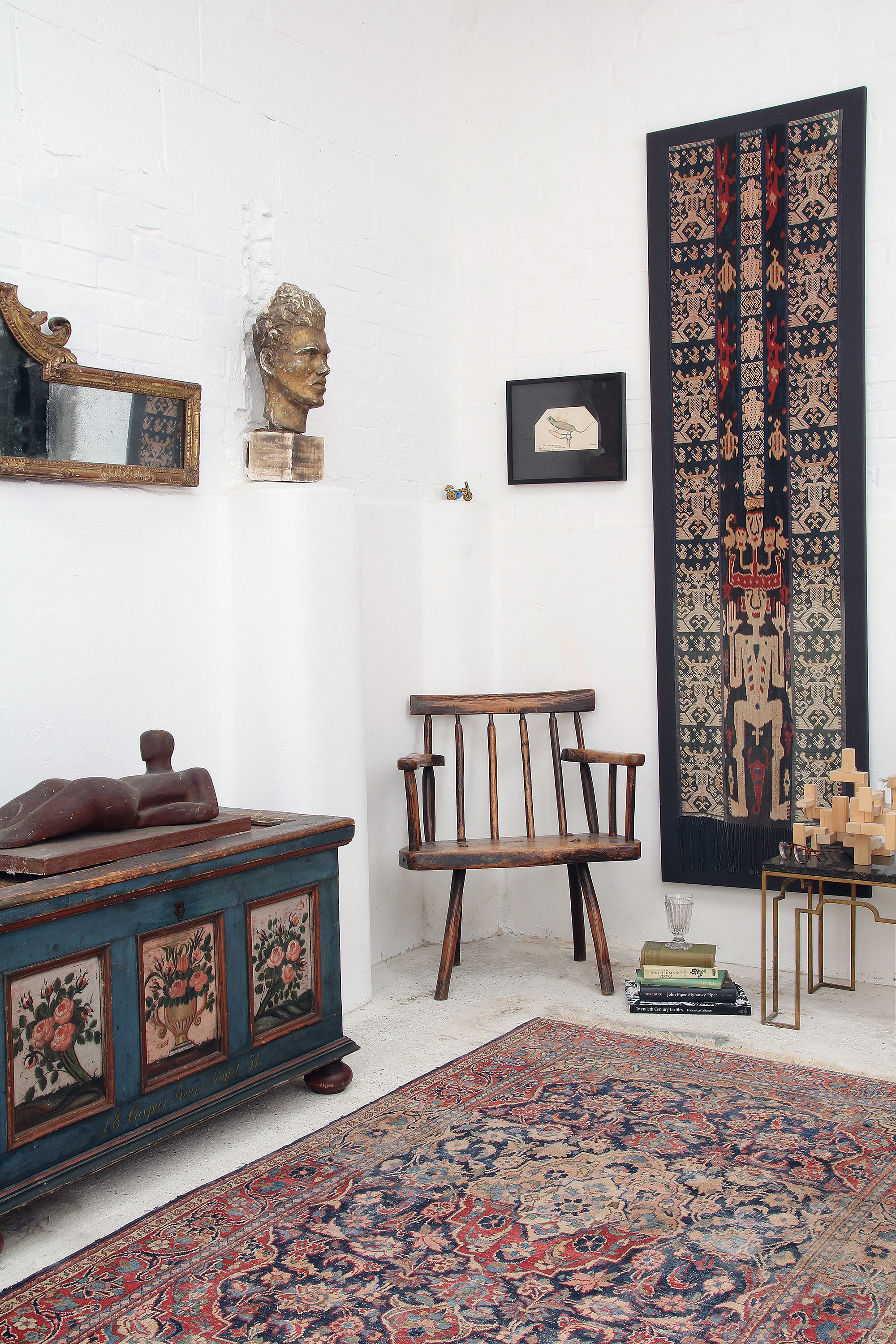Country Furniture
Traditional Craftsmanship for the Modern Home
It is no secret that the popularity of antique furniture has waned significantly in recent years, with the modern buyer far more favourable to a minimalist interior scheme. In this article, we take a look at the resurgence of period furnishings and how well-chosen pieces can enhance a modern interior.

It is no secret that the popularity of antique furniture has waned significantly in recent years, with the modern buyer far more favourable to a minimalist interior scheme. As opposed to what some see as ‘dark’ and ‘clunky’ period cabinets, tables and chairs, lighter and slighter modern pieces can take up less room and are able to maximise precious space in today’s houses and flats, which tend to be more on the diminutive side.
It seems, however, that interior designers, stylists and collectors are setting their sights once again on period furnishings, especially with sustainability being so high on the collective agenda. This is welcome news to those of us in the business. Yet, it is not to say that we can expect to see the high Victorian decor, an explosion of gilt metal, black paint and floral marquetry, back en vogue, nor the return of the hanging corner cupboard. Rather, vibrant modern interiors offset by one or two well-chosen antiques, which can add layers of texture and a sense of heritage to a contemporary setting.
One area of the antiques market which lends itself particularly to a modern interior scheme is country furniture. Unlike the highly polished and heavily ornamented tables, chairs and cabinets that one might conjure up in their mind when thinking of the drawing rooms or salons of the nobility and well-heeled members of 18th and 19th century society, the domestic examples that were owned by the many of the population, with their often simple linear construction, can sit happily in a minimalist room setting, their rich patinas and characterful quirks acquired over centuries helping them to stand out without showing off.
Windsor chairs, for example, are quintessential ‘cottage’ furniture and a perfect addition to a contemporary interior scheme. Deceptively comfortable, they are often made from timbers such as elm, ash and yew, all of which can have hypnotising figuring and deep colours, making them artworks in their own right. Made by craftsmen from the early part of the 18th century onwards, many Windsor chairs were for the less well-off members of society, who would not have a great deal of cash to spend on furniture and would be buying a piece that would be kept for life and, more than likely, be handed down to future generations. For this reason these chairs, as well as many other vernacular pieces, needed to be simply-built and strong, with a series of turned sticks wedged together and into a seat, sometimes being bent with steam to form curved rails, arms and stretchers. The rustic simplicity of some Windsor chairs, especially more ‘primitive’ examples, are perfect for the much favoured minimal style. We need only look at the popularity of Ercol furniture over the last 70 years or so; their iconic ‘Windsor’ range, clearly modelled on and named after the earlier vernacular chairs, was developed in the 1950s and has been favoured in contemporary homes ever since.
Kettle’s Yard typifies this notion. Nestled in a small street in Cambridge, it is the former house cum art gallery of collector and curator Jim Ede and his wife Helen, which was left to the University of Cambridge on the proviso that it continue to be open to the public with the original artworks, objects and furniture, virtually untouched, at the heart of its permanent collection. The house, adorned with paintings, sculpture and pottery by the likes of Ben Nicholson, Barbara Hepworth and Lucie Rie, is light and spacious, with whitewashed walls and large windows, subtly anchored by the colours and textures of the immaculately placed pieces of period country furniture. What is achieved is a seamless blend of tradition and modernity and makes Kettle’s Yard itself, with its thoughtfully curated interior scheme, as much a work of art as the individual pieces within.
Even a single, well-chosen vernacular chair, table, stool, bench or coffer, with their rich hues and beguiling natural features can enhance a modern interior when juxtaposed with newer pieces. They can help the colours of a paint or wallpaper appear all the more vibrant, echo the simple lines and shapes of a modernist piece of art, or even serve as a tangible marker for the design heritage and stylistic progression of a contemporary item of furniture.
For more information please contact Alexander Hallett
alexanderhallett@sworder.co.uk
Recent News
The Bill Wrather Collection of Automobilia
Featuring in our 4 March auction 'Better by Design | The Principal Contents of Boden Hall', join us as we explore The Bill Wrather Collection of Automobilia.
5 February 2025
Harold Harvey (1874-1941)
Ahead of our 4 March 'Better by Design - The Principal Contents of Boden Hall' auction, Professor Kenneth McConkey explores Harold Harvey (1874-1941).
4 February 2025
Sir John Lavery RA RSA RHA (1856-1941)
Ahead of our 4 March 'Better by Design - The Principal Contents of Boden Hall' auction, Professor Kenneth McConkey explores Sir John Lavery RA RSA RHA (1856-1941).
3 February 2025